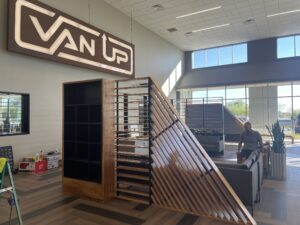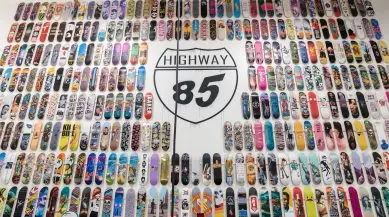All too often, customers think that design in marketing is either all art or all engineering. The more artistic folks tend to zero in on the creative elements, whereas the more practical folks want to know that it will all work logistically. The truth? Design in marketing is at the intersection of both. Here’s how this looks in practice.
Approaches To Design
Our lead designer, Joe, loves to fuse together the art and engineering of a project. Oftentimes, he’ll start with whatever aspect of the job has inspired him. It might be something a client mentioned about how much they love nature and are trying to reduce their carbon footprint or a company-wide aesthetic of minimalism that sparks ideas. It might be a logo with a unique curvature that catches his eye or a special aspect of the business culture that he feels should be played up.
Either way, Joe’s design process starts with the art side of things. He’ll digitally design or sculpt the first part of his vision, and then marry it with engineering. At Highway 85, we always ask a lot of questions to make sure our customers are fully satisfied. For example, will the design fit the given space? Is it going to be functional for the people using the area or moving around it?
Oftentimes, the engineering considerations will lead our design team to make changes to the art, which might then lead them to make some adjustments to the engineering. It’s a wonderful interplay that ultimately ends up creating a truly astounding project that not only captivates its audience but also serves its intended purpose.
Trade Shows
When it comes to the trade show booths we build, we work within a more constrained physical space than in some other projects. We know we have a pre-set configuration like 10’ X 10’ or 10’ X 20’ to maximize, which gives us a starting point on the engineering front. Different shows have different restrictions, too, so our designers might know from the get-go that the show we’re designing for doesn’t allow towers taller than a certain height or doesn’t allow anything to be hung from the ceiling.
The rules and limited space might sound restricting, but these parameters are freeing. Once we know what we have (and don’t have) access to, we can let our imaginations run wild. Joe and the design team can let the artistic side of things fill the space and morph around the requirements. And, given all the modular booths we use and the flexibility they provide, the options we end up presenting to the client are always far more plentiful and creative than you might think possible with trade shows.
Corporate Interiors
When we have customers come to us to design and build their corporate interior needs, it’s a different animal than with trade shows – just as exciting, but with a different set of considerations. A corporate interior is something that employees are going to be working around every single day for a very long time. It needs to create an inviting, comfortable atmosphere that reflects the brand and improves its workflow.

If the project is for a storefront, a corporate interior might be the first real taste of the brand that customers get. It needs to not only wow, but also showcase the hottest products and top selling points. It should also have seamless functionality that allows them to move around and experience the brand and the physical products in front of them.
In other words, corporate interiors require that we check a lot of important boxes – and do so with finesse. Our designers will often start with the art side of things with these projects because a compelling artistic vision can be molded to fit the size of the store or office building fairly easily.
With the design in marketing, art, and engineering must come together in perfect harmony for a project to be a success. We get so energized by bringing client visions to life in this way. Ready for us to dream up your next project together? Contact us today!





